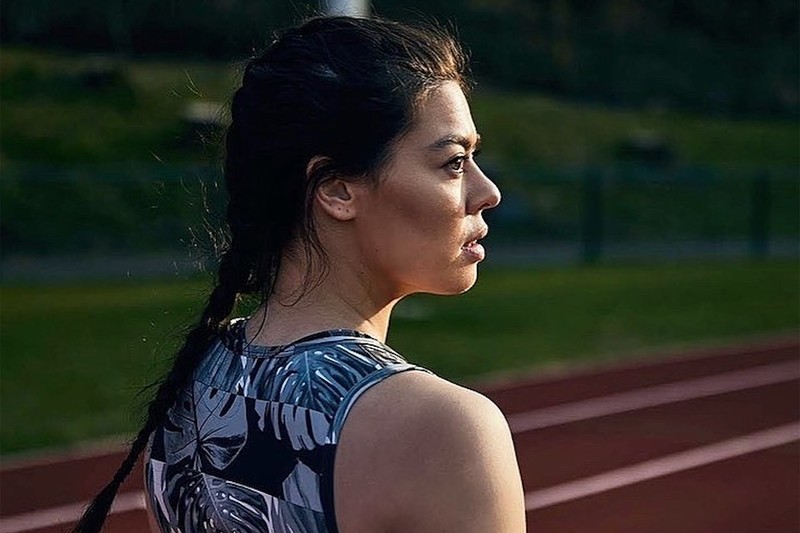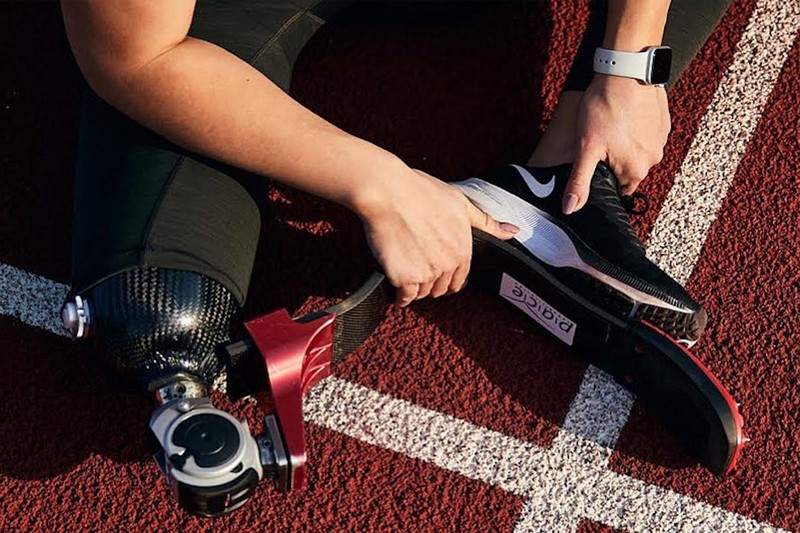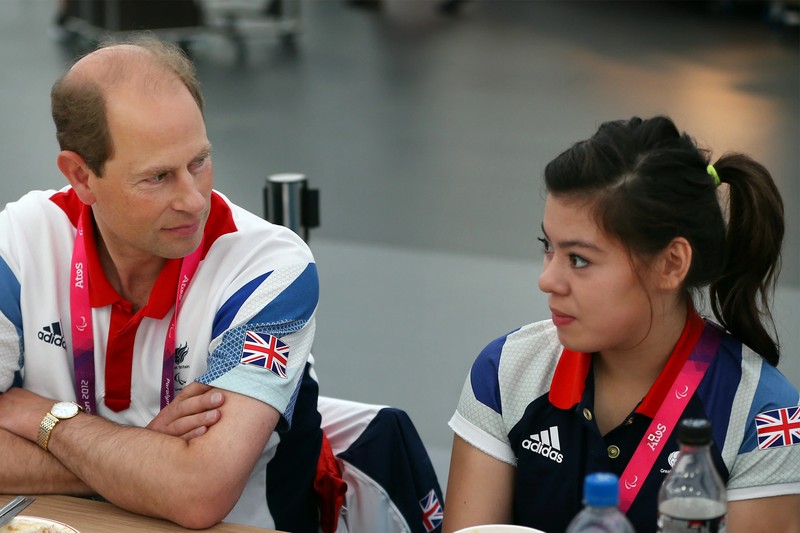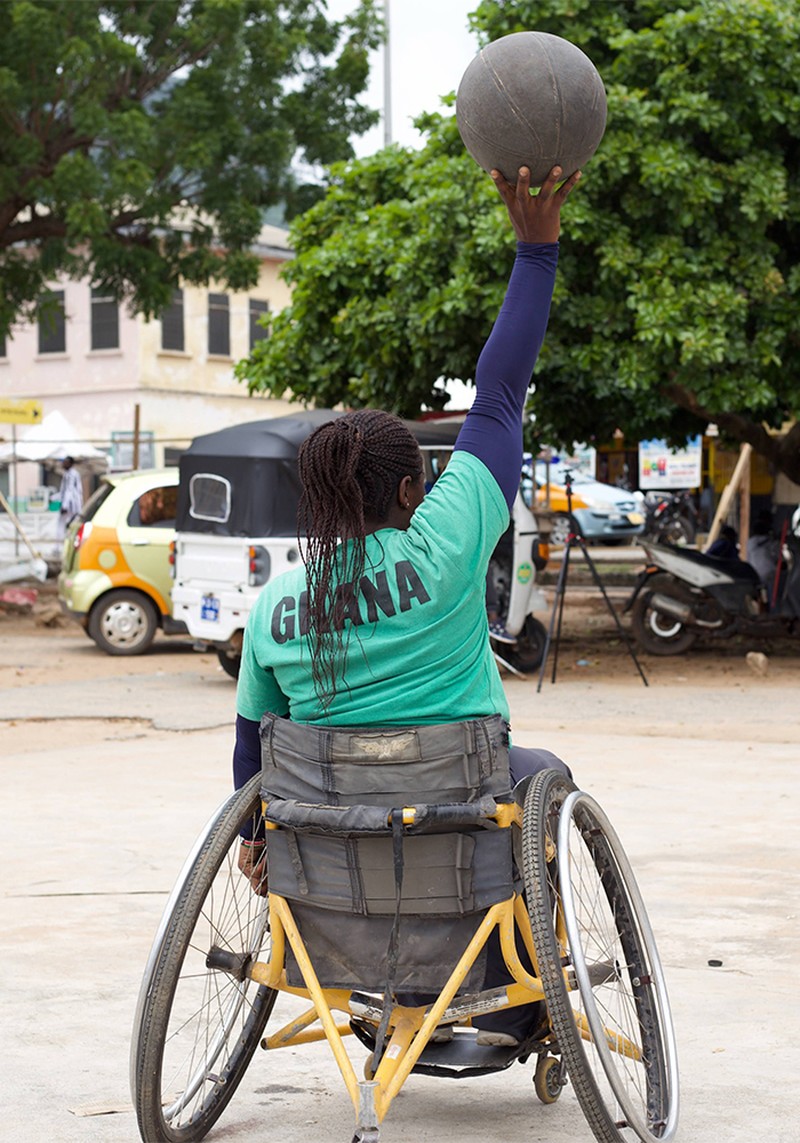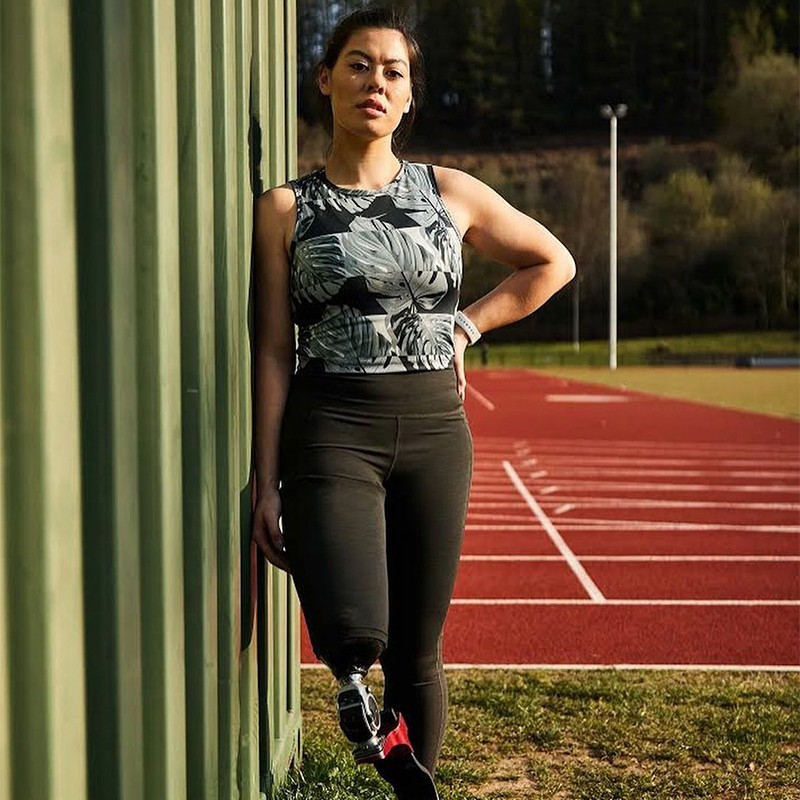SL Meets… Paralympian & Activist Julie Rogers
At birth, the tibia and fibula didn’t develop in my right leg. Because those parts were missing, the surgeons decided to amputate the redundant part of my leg when I was two. My parents had spoken to a range of specialists to make the best decision they could, and while they couldn’t foresee the rapid development in prosthetics, my doctor said that by going through the amputation I would at least be able to get up and about with the help of prosthetic limbs. Up until the surgery, I hadn’t been able to walk, but once I had the amputation my first prosthetic leg helped me do that.
Sport was always an important part of family life. My father ran a martial arts school and my twin brother (who is fully abled) played pretty much every sport going at school. My parents always encouraged us to be healthy and active – they were very supportive. My own journey with sport was a bit up and down. Up until the age of about eight I was very sporty, but I dropped out when other children started bullying me about my disability. By the age of ten I found my way back to it via disability sport. It’s been a bit of whirlwind from there…
I didn’t have any Paralympic role models back then. It sometimes felt like I was the only little girl who only had one leg. It didn’t help that I felt isolated at school – but, thankfully, my dad really encouraged me to pursue disability sport so I could meet more people in a similar position. It was never with the view of becoming an elite athlete, but I took the training seriously, which ultimately led to me being selected to represent my country.
It was my mum who first noticed my talent for sitting volleyball. She was the one taking me to all the training sessions, and as an 11-year-old I wasn’t thinking about the big picture like she was. I was aware the 2012 Paralympic Games were coming up, but I didn’t think I would be part of it. It wasn’t normal for someone of my age to make the team, which is probably what made the whole experience quite overwhelming in the end. By the time the championships rolled round, at 13 years old I was the youngest athlete on my team – and one of the youngest on ParalympicsGB overall.
When I found out I’d been selected for London, I was probably happiest about how much school I would miss! Because I never expected to make it, at that time I was probably more focused on choosing my GCSEs.
No one realised just how big London 2012 would be. I think most Paralympians can attest to that. The reception was incredible, and it marked a real change in public perception about what Paralympians can do. Only once the Games were over did we realise how much the outside world had taken notice of us, and how many conversations it had sparked around disability and disability sport. The legacy it has created is amazing.
The decision to switch from volleyball to track and field was simple. I was so young when I competed at London, and I wanted to try something different. Most children at that age get to try lots of different sports, and I had ended up specialising quite early. My brother was also a hammer thrower and a regular at the athletics track, and a few people down there suggested I try sprinting. They said I had a level of stability not often seen in amputees. I thought they were mad, but I think the sprint coach Allen – who had coached lots of juniors to elite level – saw me as a bit of a challenge. After he took me on, I was offered sponsorship quite quickly and found myself entering competitions.
I was still relatively green in the lead up to Rio. It was the first big sprinting competition and a lot of women on the track had more experience than me. Every Games is so unique, too, so it doesn’t really matter how many Paralympics you’ve been to before. It was a big test of my ability, and I took a lot away from that competition. I came fourth in my heat and from there, I was able to make significant strides at the World Championships in 2017.
A devastating injury stopped me from going to Tokyo this year. It was a shame because my technique had come on leaps and bounds, and I’d had an amazing year of training in the lead up. Then, 11 weeks out of selection, I tripped and fractured the end of my femur. It was just one of those freak accidents. The doctors told me it would take 16 weeks to heal, and while I tried to keep racing to make qualification – as well as getting x-rays and MRIs every few weeks – I never quite made it. It was a really difficult time, but it taught me some invaluable lessons. For a start, it made me recognise the importance of looking after the bones and joints in my non-amputated side. Staying healthy is the number one priority.
Paris 2024 is still very much in my sights. Missing Tokyo gave me the chance to reflect on my involvement in elite sport since the age of 11, but also the determination to go on to Paris. You can never count me out of anything – plus, we’ve got both the World Championships and Commonwealth Games next year. I’m ready to get stuck back in.
I started working with Legs4Africa in mid-2019. The charity had asked several para-athletes and amputees if they had any spare prosthetics to donate, and I had plenty I no longer needed. I then became an official ambassador in May 2020. It’s so important charities like this exist, but they very often don’t have the platform to get their message across. Legs4Africa facilitates access to better prosthetic care in developing countries and specifically The Gambia. The mission is really simple: by facilitating more access to prosthetic care, amputees can be more active and independent.
One way to support Legs4Africa is via its Leg Up campaign. It’s a pound-matched fundraiser, so every pound donated is automatically doubled. It’s running until 24th December, and aims to shine a light on limb difference, change public perceptions of disability, and ultimately raise funds for the charity’s vital programmes. At a single Gambian hospital alone, one person is amputated every three and a half days. Most of these individuals are unable to access the support and technology they need to cope with the challenges that can bring – it’s estimated 4,500 people in The Gambia need a prosthetic leg, but 80% won’t receive any emotional or physical rehabilitation support. Also, if you have spare prosthetics, Legs4Africa is always interested. It just recycled its 10,000th prosthetic leg, which was donated by a young boy in Bristol.
I’d love there to be better understanding of what being disabled, or an amputee, means. The messaging has historically been quite negative, but things are finally going in the right direction – there are now more conversations on more public platforms around these issues. My hope is that people can address their bias and re-evaluate their assumptions to make sure they either deliver or receive the message in an authentic and genuinely interested way.
The Legs4Africa Leg Up campaign is running until 24th December 2021. You can donate to the campaign here. Visit Legs4Africa.org and follow @JulieERogers on Instagram.
DISCLAIMER: We endeavour to always credit the correct original source of every image we use. If you think a credit may be incorrect, please contact us at info@sheerluxe.com.

